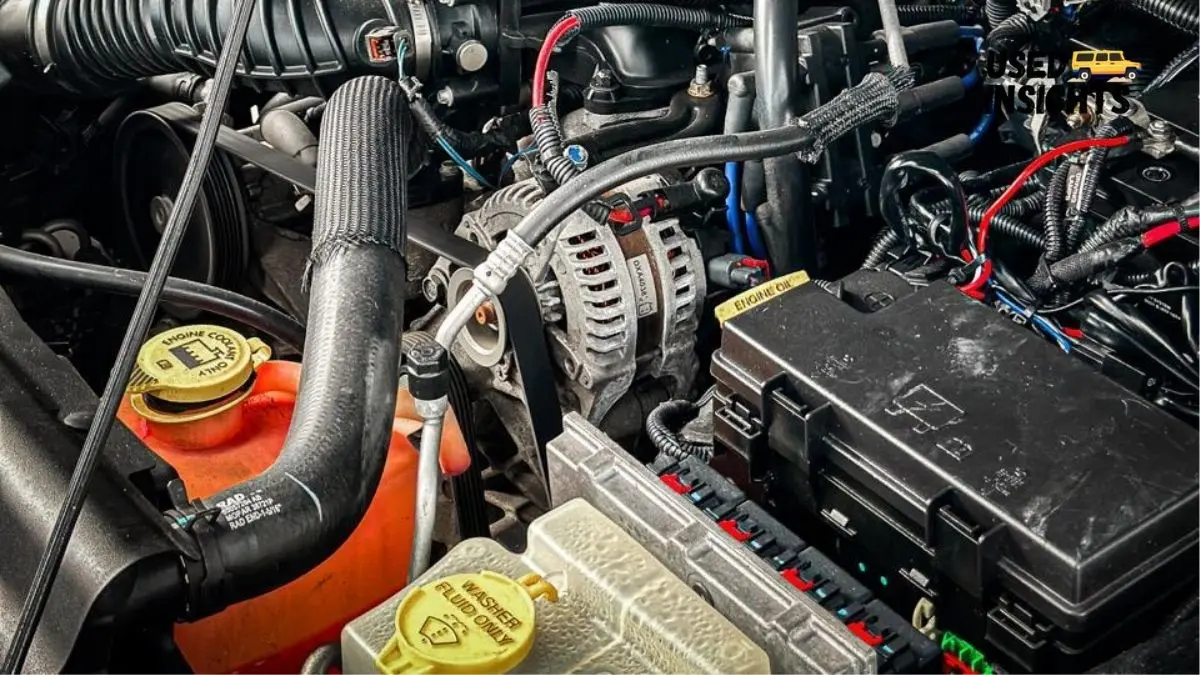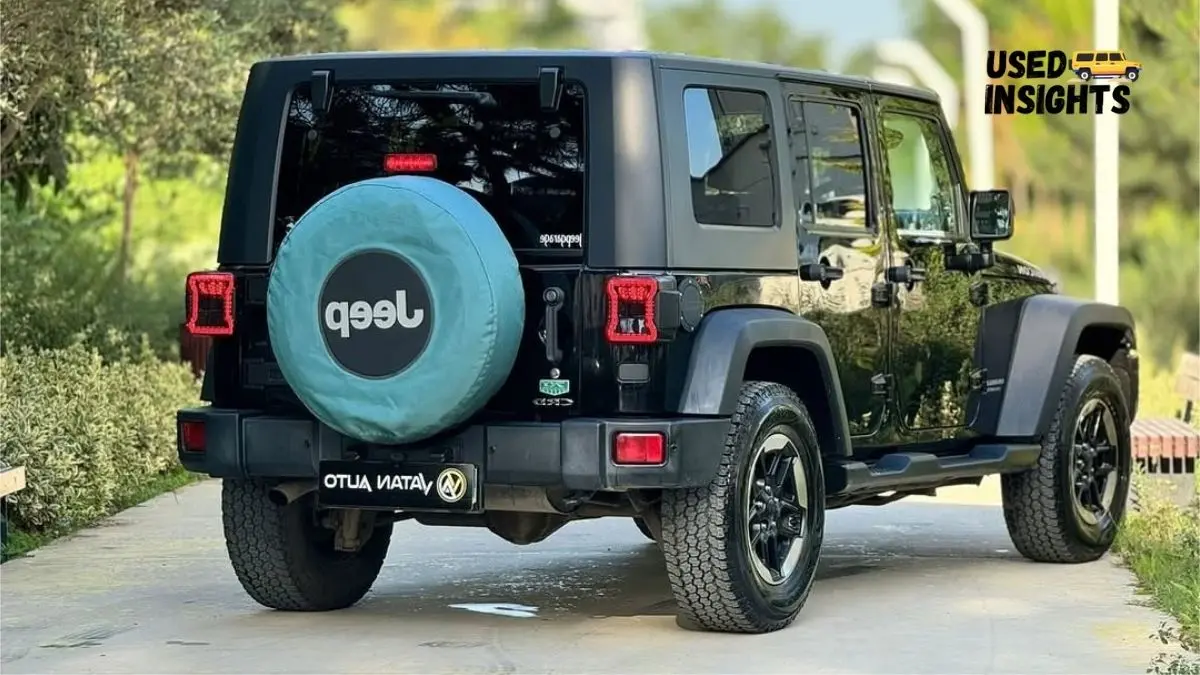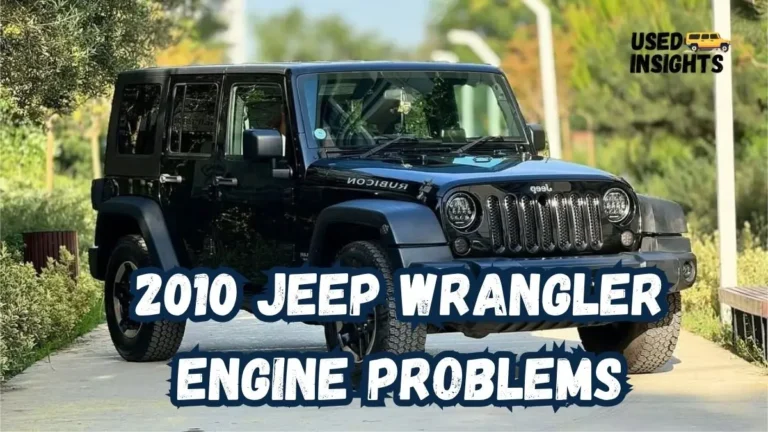The 2010 Jeep Wrangler is an iconic off-road vehicle, beloved for its rugged design and unmatched trail capabilities. Powered by a 3.8L V6 engine, it delivers solid performance for both adventure enthusiasts and daily drivers.
However, like any vehicle, the 2010 Jeep Wrangler has its share of reported issues, particularly with its engine. Understanding these problems is crucial for current owners looking to maintain their vehicle or prospective buyers evaluating its reliability.
In this comprehensive guide, we’ll explore the most common 2010 Jeep Wrangler engine problems, their causes, symptoms, and practical solutions. We’ll also provide maintenance tips to prevent issues and help you decide if this model is right for you.
If yo have a Wrangler of 2006 and causing engine problems, please check 2006 Jeep Wrangler Engine Problems: Symptoms, Causes, and Solutions
Common Engine Problems in the 2010 Jeep Wrangler
The 2010 Jeep Wrangler’s 3.8L V6 engine, used from 2007 to 2011, has been associated with several recurring issues. Owners have reported problems that range from minor inconveniences to costly repairs.

Below, we detail the most frequently cited engine issues based on owner feedback, mechanic insights, and data from sources like the National Highway Traffic Safety Administration (NHTSA).
Excessive Oil Consumption
One of the most common complaints about the 2010 Jeep Wrangler is excessive oil consumption. Many owners report that their vehicles burn through oil faster than expected, often requiring frequent top-offs between oil changes.
This issue is typically linked to worn piston rings, leaking valve seals, or faulty PCV (Positive Crankcase Ventilation) valves. In severe cases, the engine may consume a quart of oil every 1,000 miles or less, which can lead to engine damage if not addressed.
Symptoms:
- Low oil levels between scheduled oil changes.
- Blue smoke from the exhaust, indicating oil burning.
- Reduced engine performance or sluggish acceleration.
This same problem we can see in the 2017 Jeep Wrangler.
Engine Misfiring and Stalling
Misfiring and stalling are other prevalent issues with the 2010 Jeep Wrangler’s engine. A misfire occurs when one or more cylinders fail to ignite properly, leading to rough idling, hesitation, or a loss of power. In some cases, the vehicle may stall unexpectedly, posing a safety risk. Common causes include faulty spark plugs, worn ignition coils, or clogged fuel injectors. This issue is particularly noticeable during acceleration or when the engine is under load.
Symptoms:
- Rough idling or shaking while stopped.
- Check engine light (CEL) with codes like P0300 (random misfire) or P0301-P0306 (specific cylinder misfire).
- Sudden stalling, especially at low speeds or idle.
Overheating Issues
Overheating is another concern for 2010 Jeep Wrangler owners, particularly those who use their vehicles for off-roading or towing. The 3.8L engine’s cooling system, including the radiator, water pump, and thermostat, can fail prematurely, causing the engine to overheat. Debris buildup from off-road adventures can also clog the radiator, reducing airflow and exacerbating the problem.
Symptoms:
- Temperature gauge reading in the red zone.
- Steam or coolant leaks under the hood.
- Reduced engine performance or warning lights.
EGR Valve Failures
The Exhaust Gas Recirculation (EGR) valve, which helps reduce emissions by recirculating exhaust gases into the engine, is prone to failure in the 2010 Jeep Wrangler. A faulty EGR valve can cause poor engine performance, increased emissions, and even trigger the check engine light. Carbon buildup or a stuck valve is often the culprit.
Symptoms:
- Rough idling or hesitation during acceleration.
- Increased fuel consumption.
- Check engine light with EGR-related codes (e.g., P0404).
Timing Chain Issues
The timing chain in the 3.8L V6 engine can wear out prematurely or stretch, leading to serious engine problems. A worn timing chain can cause improper valve timing, resulting in misfires, loss of power, or, in severe cases, catastrophic engine failure. This issue is less common but more serious, often requiring extensive repairs.
Symptoms:
- Rattling or ticking noises from the engine, especially at startup.
- Poor engine performance or difficulty starting.
- Check engine light with timing-related codes.
Causes of 2010 Jeep Wrangler Engine Problems
Understanding the root causes of these engine issues can help owners address them effectively. Several factors contribute to the problems outlined above:
- Manufacturing Defects: The 3.8L V6 engine, while robust for off-road use, has design flaws in components like piston rings and timing chains, leading to issues like oil consumption and chain wear.
- Poor Maintenance: Neglecting regular oil changes, coolant flushes, or spark plug replacements can exacerbate engine problems, particularly oil consumption and overheating.
- Off-Road Stress: The Jeep Wrangler’s off-road capabilities put additional strain on the engine and cooling system, especially in extreme conditions like mud, sand, or high temperatures.
- Wear and Tear: High mileage (common for 2010 models, now 15+ years old) can lead to natural degradation of components like the EGR valve, water pump, or timing chain.
To diagnose these issues, owners can use an OBD-II scanner to read error codes, check oil and coolant levels regularly, and listen for unusual engine noises. Consulting a professional mechanic is recommended for complex problems like timing chain issues.

Solutions and Repairs for 2010 Jeep Wrangler Engine Issues
Addressing engine problems promptly can prevent further damage and costly repairs. Below, we outline solutions for each issue, along with estimated repair costs based on industry averages.
Fixing Excessive Oil Consumption
- Solution: Regularly check oil levels and top off as needed. Use high-quality, manufacturer-recommended oil (e.g., 5W-20 synthetic). For severe cases, replace worn piston rings or valve seals, which may require an engine rebuild.
- Cost: $100-$200 for minor fixes (PCV valve replacement); $1,500-$3,000 for engine rebuild.
DIY Tip: Check oil levels monthly and look for leaks under the vehicle.
Resolving Misfiring and Stalling
- Solution: Replace faulty spark plugs ($50-$100) or ignition coils ($100-$300). Clean or replace clogged fuel injectors ($100-$500). A professional diagnostic scan can pinpoint the issue.
- Cost: $150-$600, depending on parts and labor.
DIY Tip: Use an OBD-II scanner to identify misfire codes and replace spark plugs every 30,000 miles.
Addressing Overheating
- Solution: Flush the cooling system ($100-$200), replace the thermostat ($150-$300), or repair/replace the radiator or water pump ($300-$800). Ensure proper airflow by cleaning debris from the radiator.
- Cost: $100-$800, depending on the component.
DIY Tip: Check coolant levels weekly and inspect for leaks or blockages.
Repairing EGR Valve Issues
- Solution: Clean the EGR valve to remove carbon buildup ($50-$100). If cleaning doesn’t work, replace the valve ($150-$400).
- Cost: $50-$400.
DIY Tip: Use a carburetor cleaner for minor carbon buildup, but replace the valve if it’s stuck.
Fixing Timing Chain Problems
- Solution: Replace the timing chain and related components ($1,000-$2,500). In severe cases, a full engine replacement may be necessary ($3,000-$5,000).
- Cost: $1,000-$5,000.
DIY Tip: This repair is complex and best left to professionals.
Summary Table: 2010 Jeep Wrangler Engine Problems and Solutions
| Problem | Symptoms | Solutions | Estimated Cost |
|---|---|---|---|
| Excessive Oil Consumption | Low oil, blue smoke, poor performance | Check oil, replace piston rings/seals | $100-$3,000 |
| Misfiring/Stalling | Rough idle, CEL, sudden stalling | Replace spark plugs, coils, fuel injectors | $150-$600 |
| Overheating | High temp gauge, steam, coolant leaks | Flush system, replace thermostat/radiator | $100-$800 |
| EGR Valve Failure | Rough idle, poor fuel economy, CEL | Clean or replace EGR valve | $50-$400 |
| Timing Chain Issues | Rattling noises, poor performance, CEL | Replace timing chain or engine | $1,000-$5,000 |
Preventative Maintenance Tips
Preventing engine problems is often easier and cheaper than repairing them. Here are practical maintenance tips to keep your 2010 Jeep Wrangler’s engine in top shape:
- Regular Oil Changes: Change the oil every 5,000-7,500 miles using 5W-20 synthetic oil. Check oil levels monthly to catch consumption issues early.
- Cooling System Care: Flush the cooling system every 2-3 years and check coolant levels regularly. Clean the radiator to prevent debris buildup.
- Spark Plug Maintenance: Replace spark plugs every 30,000 miles to prevent misfires.
- Monitor the EGR System: Inspect and clean the EGR valve during routine maintenance to avoid carbon buildup.
- Address Warning Lights: Use an OBD-II scanner to diagnose check engine light issues promptly.
- Follow the Maintenance Schedule: Adhere to Jeep’s recommended service intervals for filters, fluids, and belts.
Checklist for Owners:
- Check oil and coolant levels weekly.
- Schedule oil changes every 5,000-7,500 miles.
- Replace spark plugs every 30,000 miles.
- Inspect radiator and cooling system annually.
- Address check engine light within a week.
Comparison with Other Jeep Wrangler Model Years
The 2010 Jeep Wrangler’s 3.8L V6 engine was used from 2007 to 2011, and many of its issues are consistent across these model years. However, the 2012 model introduced the 3.6L Pentastar V6, which is generally considered more reliable, with fewer reports of oil consumption and timing chain issues.
According to Consumer Reports and NHTSA data, the 2010 model has a higher number of engine-related complaints compared to newer models, but it remains a solid choice for off-road enthusiasts due to its durability and aftermarket support.
Compared to earlier models (e.g., 2005-2006 with the 4.0L inline-six), the 2010 Wrangler’s 3.8L engine is less robust but offers better fuel economy. Owners considering a 2010 model should weigh these factors against their budget and intended use.
Should You Buy a 2010 Jeep Wrangler?
The 2010 Jeep Wrangler remains a popular choice for its off-road prowess, iconic styling, and strong resale value. However, potential buyers should be aware of its engine problems and associated repair costs. Here’s a quick breakdown:
Pros:
- Exceptional off-road capability.
- Timeless design and strong community support.
- High resale value compared to other SUVs.
Cons:
- Engine reliability issues, particularly oil consumption and overheating.
- Potentially high repair costs for timing chain or engine rebuilds.
- Lower fuel economy than newer models.
Buyer Tips:
- Request a detailed service history to ensure proper maintenance.
- Get a pre-purchase inspection from a trusted mechanic.
- Consider an extended warranty for high-mileage vehicles.
If you’re prepared to invest in maintenance and repairs, the 2010 Jeep Wrangler can still be a reliable and fun vehicle, especially for off-road adventures.
Conclusion
The 2010 Jeep Wrangler is a capable and iconic vehicle, but its 3.8L V6 engine has notable issues, including excessive oil consumption, misfiring, overheating, EGR valve failures, and timing chain problems.
By understanding these issues, their causes, and their solutions, owners can take proactive steps to maintain their vehicle’s performance. Regular maintenance, such as oil changes, cooling system care, and timely repairs, can mitigate many of these problems. For prospective buyers, weighing the Wrangler’s strengths against its potential repair costs is key.
If you’re experiencing engine issues or considering a purchase, consult a trusted mechanic and follow our maintenance tips to keep your Jeep running smoothly.
FAQs
What are the most common 2010 Jeep Wrangler engine problems?
The most common issues include excessive oil consumption, misfiring/stalling, overheating, EGR valve failures, and timing chain issues. These problems often stem from design flaws, wear, or poor maintenance.
How much does it cost to fix a 2010 Jeep Wrangler engine?
Repair costs vary: $100-$200 for minor fixes like oil top-offs or EGR cleaning, $150-$800 for misfiring or overheating repairs, and $1,000-$5,000 for timing chain or engine rebuilds.
Can I prevent engine issues in my 2010 Jeep Wrangler?
Yes, regular oil changes, cooling system maintenance, spark plug replacements, and addressing warning lights promptly can prevent most issues. Follow Jeep’s maintenance schedule for best results.
Is the 2010 Jeep Wrangler a reliable vehicle?
The 2010 Jeep Wrangler is reliable for off-road use but has engine issues that require diligent maintenance. A well-maintained model with a clean service history can be a solid choice.
Additionally, You can also like and, follow us on Pinterest, and Reddit for more updates. Your thoughts and engagement are greatly appreciated and find more info in the Jeep section!

